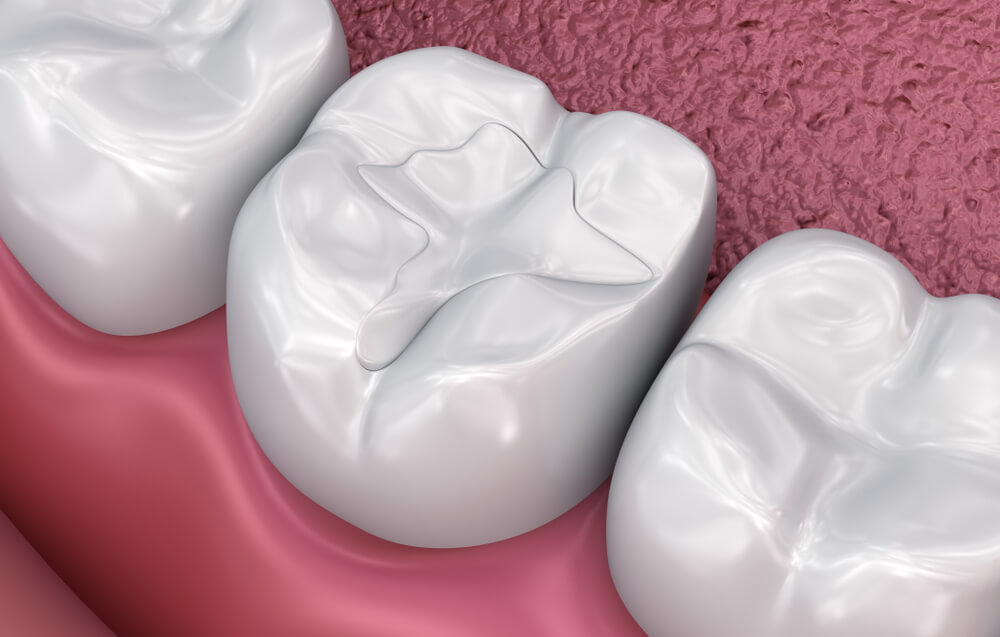The process of filling cavities is simple and straightforward and can be done at our office usually in one visit. A filling is used to treat cavities in a tooth. To repair a cavity, a dentist removes and cleans the decayed tooth area and then fills the space with a filling material.
What Causes Tooth Decay?
There are good and bad bacterias that live in your mouth. Tooth decay usually happens when harmful bacteria in your mouth make acid that eats away at your tooth enamel. This can lead to a small hole in the tooth called a cavity. More serious tooth decay or untreated cavities can cause large holes or even the destruction of the whole tooth. Worse, it can lead to pain, infection, and tooth loss when left untreated.
When your teeth are frequently exposed to the enamel destroying acid – for example, when you eat or drink foods with sugar and starches – the acid will continue to break down your teeth. After repeated cycles, you may see a white spot on your teeth showing early signs of decay and the need for a filling.
When caught early, tooth decay can be stopped or even reversed. With regular oral hygiene practices like brushing with fluoride toothpaste, flossing, and having semi-annual cleanings, your tooth can heal itself. However, if the tooth decay process is allowed to continue, more minerals will be lost. Over time, the tooth enamel is weakened and destroyed, forming a cavity.
Treatment: Fillings
What can I expect when getting a filling?
You should expect to be at our office for around an hour. This gives Dr. Wolter and our team enough time to take x-rays if needed, talk to you about the procedure and complete the dental work. Before filling cavities, we will numb your teeth, gums, and surrounding skin to minimize any pain or discomfort during the procedure. Next, the doctor will remove the decay in the tooth and replace it with a filling. This is a minimally invasive procedure that only takes a few minutes to complete.
Although filling cavities is the most common use for fillings, tooth fillings also can be used to repair damage to teeth caused by grinding, or to replace part of a broken tooth.
Types of Cavity Fillings
There are many options available for tooth fillings, and all of them have their pros and cons. Types of tooth fillings include gold, silver amalgam, tooth-colored composite material, porcelain, and a special type of glass. The best tooth fillings for you will depend on cost, what your insurance may cover, and your aesthetic preferences. Each material used for filling cavities varies in strength and color. The two most common types are amalgam and composite. Most of our patients choose amalgam to fill teeth because they prefer tooth-colored fillings. Depending on your situation, Dr. Wolter will recommend a few options to keep your teeth healthy and strong.
There are also treatments called crowns which we can do in a single visit with the use of our Single Visit Crowns (CEREC) technology and are used to repair badly broken-down teeth.
Taking Care of Fillings
Having a regular oral health routine is the best way to keep your teeth and fillings in the best shape. We recommend a soft-bristled brush, daily flossing, and regular visits.


